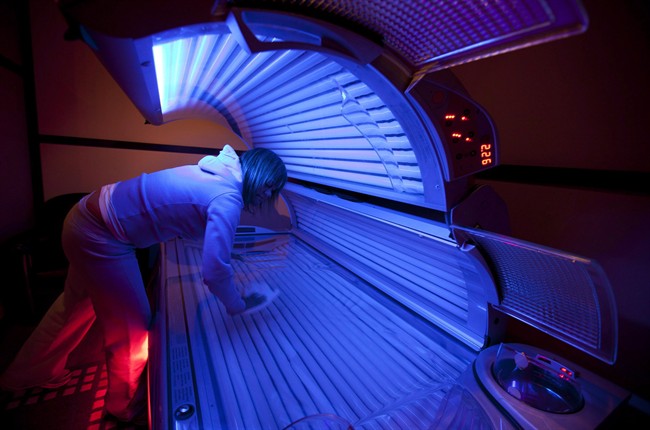WASHINGTON – Tanning beds and sun lamps will carry new warnings that they should not be used by anyone under age 18, part of a government action announced Thursday aimed at reducing rising rates of skin cancer linked to the radiation-emitting devices.

The Food and Drug Administration has regulated tanning machines for over 30 years, but for the first time the agency is requiring manufacturers to warn consumers about the cancer risks of indoor tanning.
Makers of sunlamps and related devices must include a prominent label, known as a “black box” warning, on their devices, stating they should not be used by people under 18. Additionally, manufacturers must provide more warnings about cancer risks in pamphlets, catalogues and websites that promote their products. Those materials must warn that the devices shouldn’t be used by people who have had skin cancer or have a family history of the disease.
READ MORE: Canadian skin cancer rates not a cancer success story
The government action is aimed at curbing cases of melanoma, the deadliest form of skin cancer, which have been on the rise for about 30 years. An estimated 2.3 million U.S. teenagers tan indoors each year, and melanoma is the second most common form of cancer among young adults, according to the American Academy of Dermatology.
For years, physician groups have urged the U.S. government to take action on tanning beds. The groups cite increases in the number of skin cancer cases among people in their teens and 20s, especially females ages 15 to 29.
- Capital gains changes are ‘really fair,’ Freeland says, as doctors cry foul
- Ontario doctors offer solutions to help address shortage of family physicians
- ‘Dangerous message’: Experts slam anti-sunscreen claims circulating online
- ‘Trying not to die’: Tourism operators loaded with debt despite rising demand
A spokeswoman for the American Academy of Dermatology said she hoped the federal move would spur more states to take action. Twenty four states already have laws banning minors of various ages from using indoor tanning equipment.
“The FDA has taken a very strong stand about indoor tanning and this will, I think, really encourage additional states to strengthen their indoor tanning restrictions,” said Dr. Mary Maloney of the University of Massachusetts Medical School.
Calls placed to the Indoor Tanning Association were not immediately returned Thursday. The group represents makers of tanning products and operators of indoor tanning facilities.
READ MORE: Tanning bed ban for youth possible
The FDA is also requiring manufacturers to meet certain safety and design requirements, including timers and limits on the radiation levels the products produce.
Previously the FDA classified tanning machines as low-risk devices, in the same group as bandages and tongue depressors. As part of Thursday’s action the FDA reclassified all tanning beds and sun lamps as moderate-risk, or class II, devices. That allows the FDA to review their safety and design before manufacturers begin selling them.
Safety standards are important because recent studies show that many devices can cause sunburn even when used as directed.
Companies will have roughly 15 months to place the warning labels on devices already used in tanning facilities but no longer marketed. Companies looking to sell new devices will have to comply with the new labeling and premarket review requirements in 90 days.
The FDA requirements only apply to makers of indoor tanning devices, not salon operators.
“The FDA is not trying to burden salons but rather to educate consumers who choose to voluntarily use sunlamp products about the potential risks,” said FDA deputy director for policy, Nancy Stade, on a call with reporters.
Nearly 140,000 new cases of melanoma are expected to be diagnosed this year and the disease is expected to cause 9,710 deaths, according to the American Cancer Society.
Recent studies have shown that the risk of melanoma is 75 per cent higher in people who have been exposed to ultraviolet radiation from indoor tanning. While most cases are diagnosed in people in their 40s and 50s, the disease is linked to sun exposure at a young age.



Comments